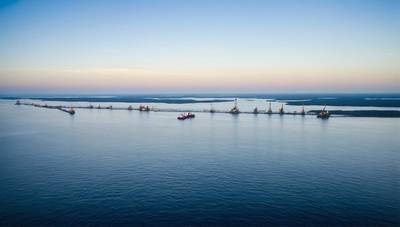US wants to increase offshore oil drilling through easing of pressure rules
The U.S. Interior Department announced on Thursday that it had implemented new guidelines regarding pressure differentials allowed in certain types of oil drilling, in part of Gulf of Mexico. The department expects the changes to boost U.S. output of oil.
The Energy Dominance Council, led by Doug Burgum, Interior Secretary to President Donald Trump, is seeking ways to reduce costs for oil and natural gas producers, lower regulations, and increase oil production, which was at record levels during the tenure of former President Joe Biden.
Operators working in the Wilcox formation, which is part of the waters Trump has renamed as the Gulf of America can now produce oil using multiple offshore reservoirs by increasing the pressure difference.
The Paleogene rules for so-called "downhole commingling" between reservoirs expand the allowed differential pressure from 200 pounds per sq inch to 1500 psi.
Interior anticipates that the changes will increase oil production by 100,000 barrels a day in the region within 10 years. Burgum said that this was a "major milestone" in the quest to achieve American Energy Dominance. "We are delivering more American Energy, more efficiently and with fewer roadblocks."
Interior's Bureau of Safety and Environmental Enforcement stated that the producers must comply with conditions, including regular performance reporting and pressure monitoring.
The Bureau of Ocean Drilling issued safety regulations for offshore drillers late in the Biden Administration, as new technology enabled them to work under extreme subsea conditions. High pressures may unlock untapped oil reserves worth billions of barrels around the globe, but safety concerns are looming.
The Biden-era regulations came after Chevron began production at its Anchor project, owned by TotalEnergies, which was the world's first ever to operate at 20,000 pounds per square inch of pressure and reach reservoir depths as deep as 34,000 feet (10363 meters). (Reporting and editing by Hugh Lawson; Timothy Gardner)
(source: Reuters)







